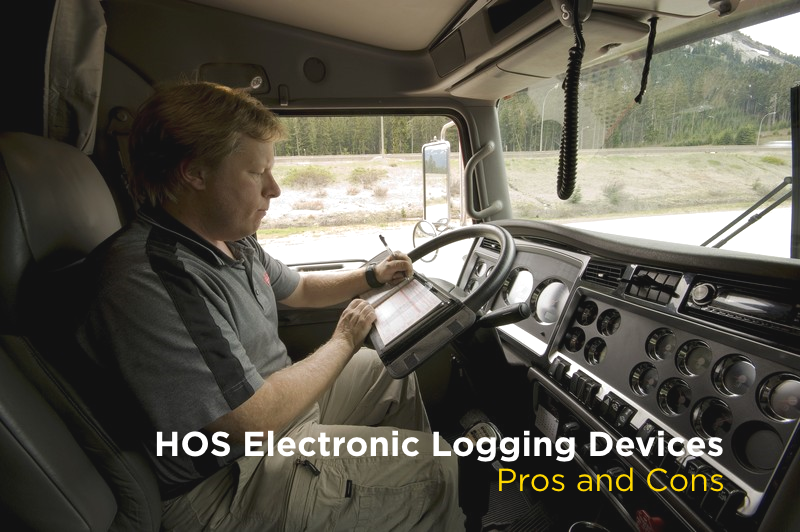Electronic Logging Devices – Pros and Cons
By now, you’ve probably heard that truck drivers will be required to use electronic logging devices (ELD) rather than paper logs to track their hours of service (HOS). As with any change, there are good and bad things to consider when making the switch to Electronic Logs (ELog).
The CONS of electronic log books

Cost
Paper logs are much cheaper, and the initial outlay of funds to install these electronic logging devices in trucks is high, especially in a large fleet to be compliant with the ELD mandate. However, a larger fleet can likely negotiate a lower per-unit cost due to the number of devices needed. Note that older trucks, which would require a lot of expensive retrofitting to accommodate the devices and their GPS trackers, are exempt from the rule.
As an owner-operator, you can also install electronic logbook mobile apps that are approved by the DOT. Drivers can show an officer their logs in the app or they can instantly print, fax or email them usually for free.
Learning curve for Electronic Logging Devices
Since technology is involved, there will be a learning curve for professional truck drivers, dispatchers, fleet operators, and enforcement personnel. Costly and time-consuming training sessions may be required.
In addition to learning how to use the electronic logging devices, drivers will need to learn how to troubleshoot them when they lose connection, are unable to get a GPS location, or some other issue happens on the road.
Loss of privacy
The devices use GPS tracking, so drivers could feel that their every move is being logged and watched by enforcement personnel and fleet operators. While on duty, the devices track within a one-mile radius, and while off duty, they track within a 10-mile radius.
The PROS of electronic log books

Accuracy
The GPS-based ELDs will keep accurate logs of how long drivers are behind the wheel, how fast they’re moving, and when they’re stopped and waiting to load or go through a weigh station. This removes part of the driver’s paperwork burden and helps ensure that dispatchers and fleet owners trust the data they’re receiving. This also ensures that drivers won’t be pressured to fudge their logs and drive over their maximum hours.
On-duty, non-driving time tracking
As mentioned previously, these devices will help drivers keep logs of the times the truck isn’t moving as drivers perform load-related duties. When there are long loading or traffic delays, this provides drivers with records and data to back up their claims.
Easier tracking of hours of service (HOS)
Since the device keeps track of hours spent driving, drivers can focus on the road and freight hauled rather than the clock and time log.
Also, drivers don’t have to fill out paperwork and wait for it to get approved after picking up or dropping off a load. It is likely that drivers will have to keep backup paper logs until everyone in the process is used to the devices, supports them, and learns to trust the data they gather. But once this transition period is over, drivers, dispatchers, and fleet owners will benefit from less paper to shuffle and store.
Faster compliance checks with Electronic Logging Devices
Because HOS and other data are electronic rather than stored in a paper log, the devices enable enforcement officials to ensure that drivers are following the rules and get them back on the road quicker.
Faster, more accurate paychecks
With data being sent electronically, fleet operators can process it quicker, which means drivers can be paid quicker. There will also be less haggling because the ELD will have accurate details about driving and non-driving work hours, cutting down the number of paycheck processing delays due to disputes.
Peace of mind for drivers’ families
Thanks to the GPS tracker, more than just dispatchers can keep track of a driver’s progress. ELDs will allow families to log onto a tracking site and ensure that their driver is safe and making progress toward finishing the job and coming home.
With nearly two years to prepare for the complete switch to ELDs, we in the trucking industry have time to address our concerns, especially with regard to privacy, while learning more about the potential benefits of these new devices for logging drivers’ hours and tracking their location. As we make the transition, we will all be learning together.



Give us your opinion!